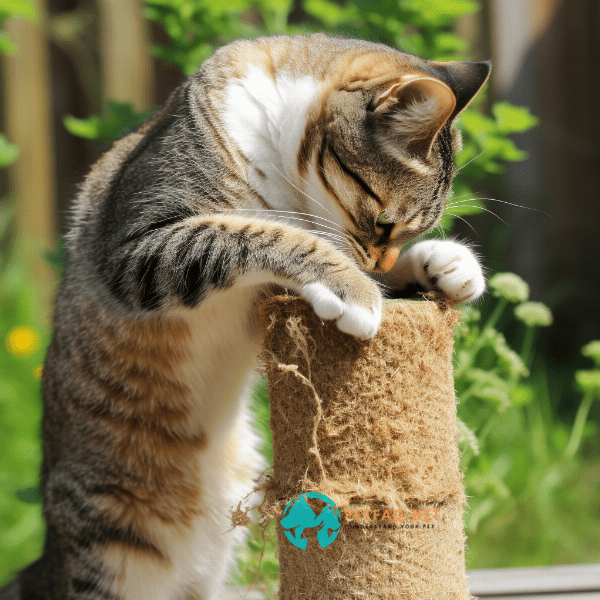Marking territory: Cats have scent glands on their paws, and scratching is a way for them to mark their territory and communicate with other cats.
Cats are fascinating animals that display a wide range of behaviors that can be both intriguing and mystifying. One of the most common behaviors that cats exhibit is scratching, which is often seen as a destructive habit. However, scratching serves an important purpose for cats as it allows them to mark their territory and communicate with other cats.
Cats have scent glands on their paws that release a unique odor when they scratch. This odor serves as a marker for other cats, indicating that the territory has been claimed. The act of scratching is also a way for cats to stretch and exercise their muscles, as well as maintain their claws. In the wild, cats rely on their claws for hunting and defense, so keeping them sharp and strong is essential.
While scratching behavior is a natural instinct for cats, it can become a problem for owners who have furniture or other items that they don’t want damaged. However, there are ways to redirect a cat’s scratching behavior to more appropriate surfaces, such as scratching posts or pads. Providing a variety of surfaces for scratching can also help to prevent boredom and encourage exercise.
Catnip is a plant that is often used to stimulate a cat’s play and hunting instincts. When a cat smells or ingests catnip, it can cause a range of behaviors, including rolling, rubbing, and scratching. Catnip contains a compound called nepetalactone, which stimulates the olfactory system in cats and triggers a response that can be similar to a mild hallucinogen.
Interestingly, not all cats are affected by catnip in the same way. Some cats may show little to no response, while others may become overly excited and playful. It is estimated that around 50-70% of cats are affected by catnip, and the response is believed to be genetic.
Overall, scratching behavior in cats is a natural and important aspect of their behavior. Providing appropriate surfaces for scratching and using positive reinforcement techniques can help to redirect this behavior to more appropriate areas. Additionally, using catnip as a stimulant can provide mental and physical stimulation for cats, and can be a fun and rewarding way to interact with them.
Read more:Catnip and Scratching: Managing Cat Behavior

Related Questions
- Are there any medications or supplements that can help a timid cat feel more confident?
- How can cat owners use catnip to entertain their cats or encourage playtime?
- What are the signs and symptoms of dental problems in cats?
- What is the average lifespan of a cat’s teeth?
- Do certain cat breeds shed more than others?
